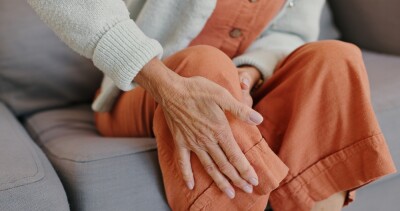Case Study Excerpt: Treating Low Back Pain with Integrative Medicine

Scott is a 44-year-old male with lower back pain, muscular spasms, and sciatic nerve symptoms. He is a businessman who spends a lot of time in front of the computer and traveling.
Scott is athletic and works out regularly in the gym and doing martial arts. Though he has had back pain on and off for more than a decade, about two years ago he “put his back out” when he was bending to pick up his phone from the floor at the same time as he happened to cough. An MRI indicated mild degenerative disc disease at L3/4 (disc between third and fourth lumbar vertebrae).
Since then, he has seen several health practitioners, including a physiotherapist, osteopath, chiropractor, massage therapist, kinesiologist, and naturopath. He does get pain relief with treatments, but the pain and numbness into his leg recurs occasionally.
Consultation
Scott entered the treatment room in obvious discomfort, though he stated that after recent treatment from the clinic’s physiotherapist, he had some improvement from a very “rough, painful week.” His pain can be relieved by over-the-counter anti-inflammatories or muscle relaxants, which he will take before long flights, before working out, and sometimes before bed. Though he is wary about taking these painkillers, he takes them when he felt it’s necessary.
Because he has two young children, works long hours, and frequently travels across time zones, he has irregular sleep patterns and insufficient sleep hours. He occasionally feels tired, but is able to push past the fatigue, though the pain affects his energy levels.
Upon palpation, it was obvious that many of his back and gluteal muscles were tight. The physiotherapist, osteopath, and kinesiologist had noted that when his back was not in spasm, he has excessive mobility. In other words, though he could get temporary relief from his spasms and pain with massage and chiropractic adjustments, the muscle tightness and pain would quickly return because his body was trying to protect him. As such, they had given him stabilization exercises.
Because his job requires a lot of sitting and long-distance travel, he was asked to use a sit/stand desk and get up and move around on long flights. His naturopath has prescribed supplements to help manage his stress and inflammation, while also making nutritional suggestions.
When he started his TCM/acupuncture treatments, a lot of the basics had already been covered. He had even had some acupuncture from his naturopath, though she had not completed a TCM diagnosis, instead focusing on needling just the tight muscles. It was explained to him that a full TCM assessment would help with the selection of acupuncture points that would help support his whole body.
Lower back pain, joint weakness, adrenal insufficiency, fatigue, and dark circles under his eyes indicated a TCM kidney deficiency. Ligamental weakness, a tendency toward feeling irritability, pain in the glutes and lateral side of the lower leg, irregular schedule, and elevated liver enzymes indicated a TCM Liver Qi stagnation.
Treatment
The treatment plan involved using acupuncture to support his adrenal glands and liver, calm his nervous system, and improve blood circulation to the painful tissue so he could do his prescribed exercises with less pain.
He was also instructed to include some stress management techniques, including deep breathing exercises, and to take a break from the martial arts practice while he was to work on building the muscles that would support joint stability. The importance of sufficient sleep was also discussed, though he didn’t feel he could change that because of his tight schedule.
The first acupuncture treatment involved local points at the low back, gluteal muscles, and down the affected leg, as well as distal points at the mid back and lower legs. The day after that treatment, he reported feeling a bit sore, but better able to do his prescribed exercises. The next week, his pain was much improved, and he was able to walk more normally, though he felt a bit unstable in the low back.
After four more weekly acupuncture sessions and continuation of his exercises, Scott no longer had numbness in his leg or pain in his back. He occasionally feels stiffness building in his back, so he has been instructed to continue with his exercises, get periodic reassessment for acupuncture and new exercises.
Take-Away
While many pain patients do have tight muscles that feel better when released through acupuncture, massage, chiropractic manipulations, or other manual therapy, they will have to continue with frequent treatments if they do not address the underlying causes. In his case, too frequent releasing of tight muscles was making him less stable and causing him to have more muscle spasms.
Often, patients must be encouraged to do homework—exercises, stress management, eating healthy, and lifestyle changes—and if they don’t do them, treatment can take longer to achieve results. However, with a concerted team approach, this patient’s symptoms are improving. While pain may have been his main motivator for treatment, the changes he makes will ultimately support his overall health.
Editor’s Note: This is an excerpt from the e-book, Integrative Approaches to Pain Management. To access the full text, click here.




















SHARE